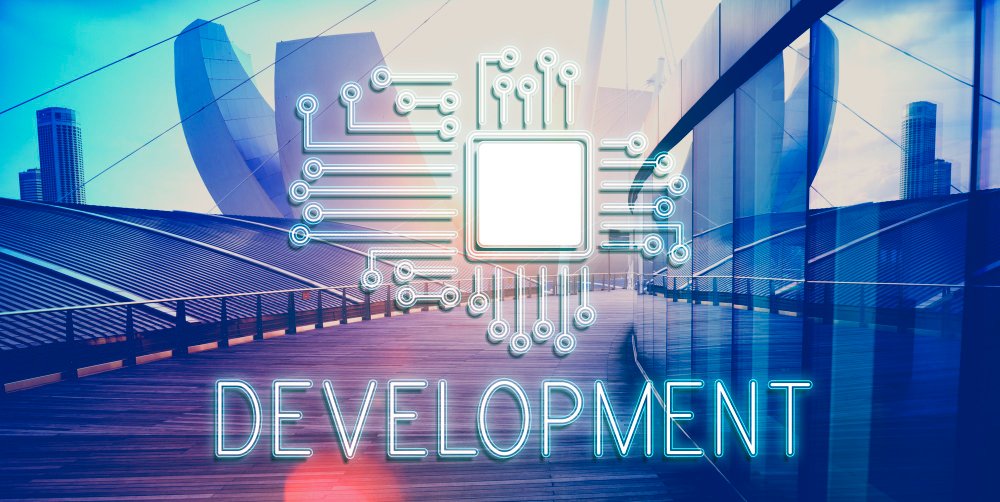In the ever-evolving landscape of technology, becoming a full-stack developer is an enticing prospect. The ability to create both front-end and back-end solutions empowers developers to build comprehensive web applications. But how should one embark on this journey?
Online full-stack development courses have emerged as a popular choice. In this post, we will dive into the world of full-stack development, explore the strengths and weaknesses of Online Full-Stack Courses, and provide guidance on choosing the right program.
In the realm of full-stack development, the potential earnings are as diverse as the code they craft. The median annual salary for full-stack developers stands at a promising $101,334, a figure that dances to the rhythm of experience and role. For instance, those just embarking on their coding odyssey may find themselves reaping an $83,169 median salary after a year of dedicated journeying through the digital landscape.
But here’s the thrilling twist: more hours invested, more lines of code woven, and more digital worlds built can lead to a richer reward. Within the mystical window of three to five years, these tech conjurers may see their annual earnings ascend to a majestic $122,645. Yet, remember, the wage spells may shift with the winds of location, a company’s treasury, and other enigmatic variables that govern the digital cosmos.
Overview of Full-Stack Development: Bridging Front-End and Back-End Worlds
A full-stack developer is a master chef who can create both the most delectable dishes (front-end) and perfectly manage the bustling kitchen (back-end). Full-stack development involves proficiency in front-end technologies like HTML, CSS, and JavaScript and back-end technologies such as databases and server-side scripting. This skill set enables developers to craft seamless web applications, from user interface design to database management.
These modern-day sorcerers also conjure the foundational code that underpins the website’s very essence, breathing life into it with the mystical runes of HTML. This all-encompassing programming wizardry ensures the webpages glide effortlessly, forging harmonious connections and facilitating the free flow of information across the sprawling tapestry of internet databases.
Why Choose Online Full-Stack Development Courses?
Yet, the path of a full-stack developer is fraught with challenges, for they must embark on epic quests to defeat the bugs that threaten to disrupt the digital realm’s peace. Through meticulous testing and debugging rituals, they guarantee the website’s functionality remains as smooth as the silken threads of a spider’s web. In their noble quest for digital excellence, full-stack developers follow a sacred ritual. They commence their journey.
Full-stack developers possess a unique mastery, straddling the realms of both back-end and front-end programming, and this versatility opens up a world of career opportunities. A full-stack developer isn’t confined to a single path but can meander through the lush forests of back-end development or bask in the sunny fields of front-end design.
Their comprehensive training spans both domains, granting them access to a wide array of job prospects. They might find themselves crafting intricate back-end systems or sculpting the captivating user interfaces of the front-end, all thanks to their holistic education.
The full-stack developer’s toolkit is so well-rounded that they can seamlessly blend the back-end and front-end aspects, harmonizing the inner workings of a website with its outward user experience. This incredible advantage not only aids in meticulous bug testing but also elevates the overall performance of their creations. In essence, full-stack developers are the architects of digital harmony, bridging the gap between the unseen coding intricacies and the user-friendly interface, all while charting an innovative and boundless career path.
The Latest Trends in Full-Stack Training: A Glimpse into 2023
Let’s examine the most recent developments that are influencing this dynamic field’s future as we enter 2023.
-
Accepting No-Code and Low-Code Development
The creation of software is undergoing a revolution as a result of the growth of low-code and no-code platforms. Anyone may become a developer using these platforms by using “virtual programming”—just point and click! The cost of employing full-stack engineers is falling as a result of this trend, which also lowers entry barriers for businesses. Appian, Mendix, Quickbase, Zoho Creator, and Nintex are popular systems in this field.
-
The Revolution in Artificial Intelligence
Significant advancements in artificial intelligence (AI) are being made in Full-stack development of artificial intelligence (AI) has made great progress. AI is expanding the technological stack with new developments in data analysis, machine learning, and high-performance computing. The continued development of AI is being greatly aided by full-stack developers who have a thorough grasp of these technologies. SciKit Learn, TensorFlow, PyTorch, and Google ML Kit are a few well-known AI tools and frameworks.
-
The Development of Blockchain
In recent years, blockchain technology has experienced extraordinary growth. Various sectors are beginning to grasp its potential for developing safe, open, and decentralized solutions. As more firms investigate blockchain-based solutions, full-stack engineers with blockchain experience are in great demand.
-
The Internet of Things
Full-stack development continues to be heavily influenced by the Internet of Things (IoT). There is also a rising demand for developers who can construct and maintain Internet of Things (IoT) applications as more devices become networked. This pattern is anticipated to last until at least 2023.
-
Investigating Mixed Reality
Another fascinating trend in full-stack development is mixed reality (MR), which mixes components of augmented reality (AR) and virtual reality (VR). Users may enjoy immersive and engaging experiences thanks to developers with MR application development expertise.
Benefits of Enrolling in Online Full-Stack Developer Training: Unlocking the Digital Classroom
Online full-stack developer training offers a treasure trove of advantages:
- Flexibility: Online programs let you learn at your own pace. It’s like having a library where you set the opening and closing hours.
- Accessibility: Just like a virtual subway system, online courses are accessible from anywhere, eliminating the need for a daily commute.
- Cost-Effective: Imagine enrolling in a full-stack developer training program as an investment. Online options are more budget-friendly compared to traditional classroom courses.
- Diverse Learning Materials: Think of online courses as a vast menu at a restaurant. They often offer diverse learning materials, from video lectures to interactive coding exercises.
Downsides of Online Full-Stack Developer Training: Navigating the Rough Waters
However, online training isn’t without its challenges:
- Self-Discipline: The flexibility of online learning can be a double-edged sword. It requires a high level of self-discipline, akin to steering your ship through choppy waters.
- Isolation: Unlike a bustling campus, online learning can be isolating. Interaction with instructors and peers may be limited, leading to a sense of solitude.
- Quality Assurance: Not all online courses are created equal. Some may need more quality and accreditation than brick-and-mortar institutions offer.
- Technical Challenges: Just like a ship encountering storms at sea, you might face technical glitches or connectivity issues that can disrupt your learning journey.
Key Components to Look for in Full-Stack Developer Training: The Treasure Map
Stack developer training in India has gained tremendous popularity in recent years. With the ever-increasing demand for skilled web developers, both locally and internationally, many aspiring coders are turning to full-stack development courses to enhance their technical prowess.
These comprehensive programs not only equip students with a diverse skill set encompassing both front-end and back-end development but also provide practical experience on real-world projects.
Additionally, stack developer training in India often offers a cost-effective alternative to similar programs abroad, making it an attractive option for beginners and experienced professionals looking to upskill in the rapidly evolving world of web development. When choosing an online full-stack developer training program, you need a reliable treasure map.
Here are key components to consider:
- Curriculum Depth: Ensure the program covers a comprehensive range of technologies, including both front-end and back-end tools.
- Interactive Learning: Look for courses with hands-on projects and coding exercises. It’s like practicing swordplay to become a skilled pirate.
- Instructor Expertise: Your instructor is your guiding star. Make sure they have real-world experience in full-stack development.
- Community and Support: Seek programs that offer a vibrant online community and provide support when you encounter rough seas in your learning journey.
Conclusion: Navigating the Full-Stack Developer Training Waters
In the vast ocean of online full-stack development, you have the opportunity to become a true captain of your destiny. Embrace the advantages of flexibility, accessibility, cost-effectiveness, and diverse learning materials. Be prepared to navigate the downsides of self-discipline, isolation, quality assurance, and technical challenges.
Remember, choosing the right program is like finding a treasure chest filled with knowledge and opportunities. Carefully examine the curriculum, seek interactive learning experiences, trust experienced instructors, and ensure a supportive community.
As you embark on your full-stack development journey, keep in mind that the skills you acquire will empower you to build the digital future. Just like a seasoned sailor, you’ll sail through the waves of technology, creating innovative web applications that leave a mark on the digital landscape.
Welcome to the immersive world of Full Stack Developer Pro, brought to you by Imarticus Learning! This transformative course delves deep into the intricacies of data structures and algorithms, ensuring you master these vital components. Designed as a six-month odyssey, it’s not just an educational voyage; it’s a ticket to a promising career.
Within this interview-assured program, they mold you into a full-stack web developer par excellence. You’ll gain an invaluable blend of technical prowess, embracing the realms of both front-end and back-end programming.












